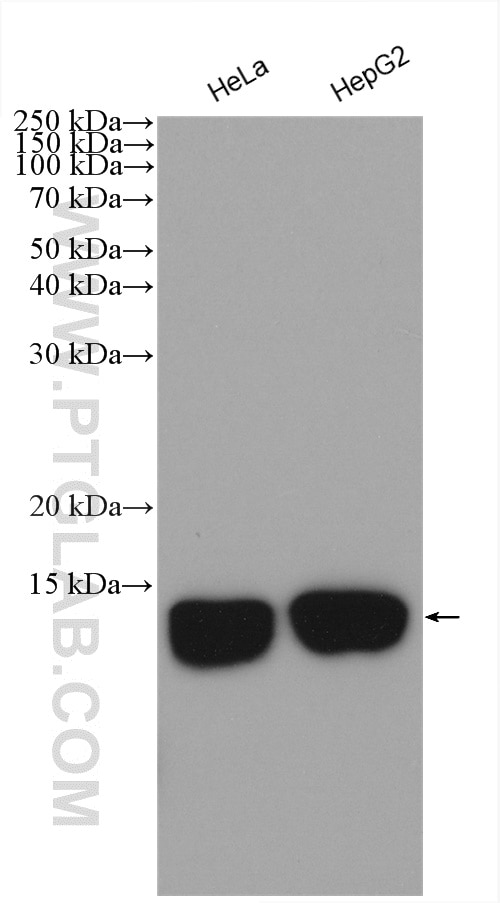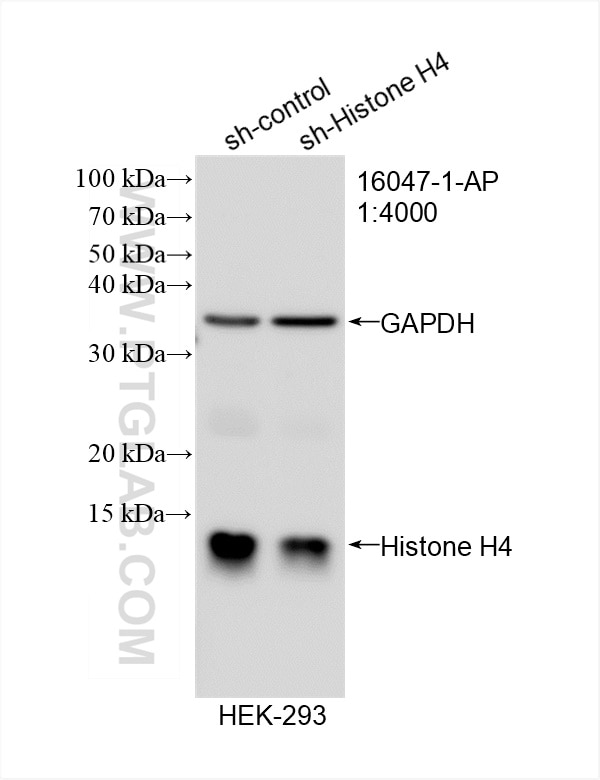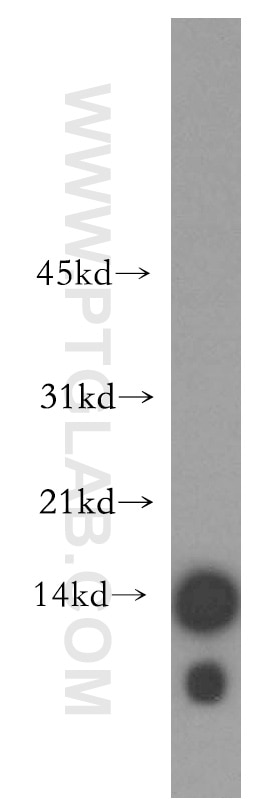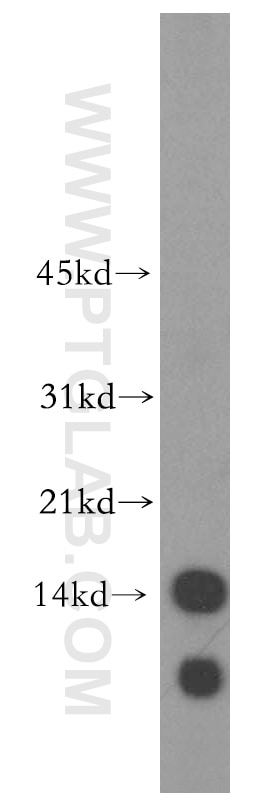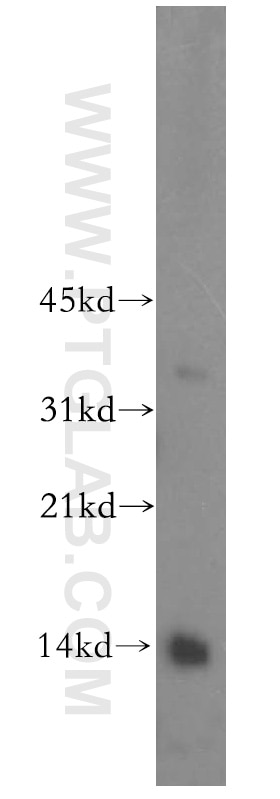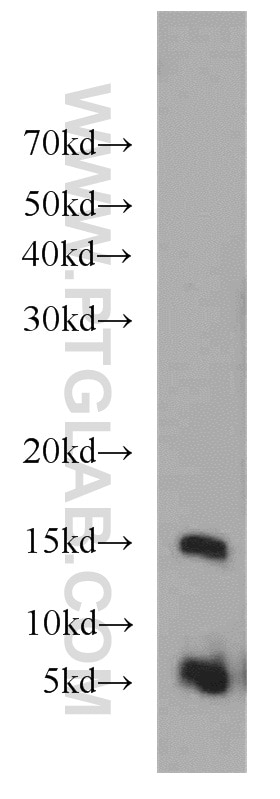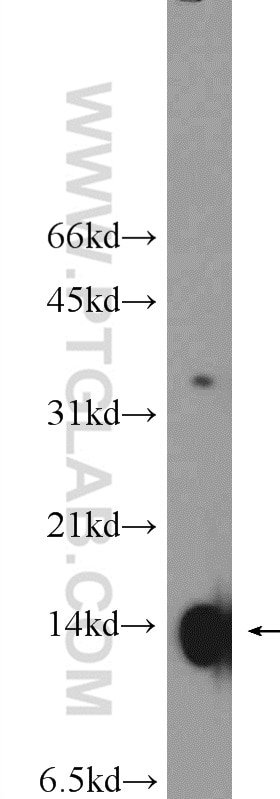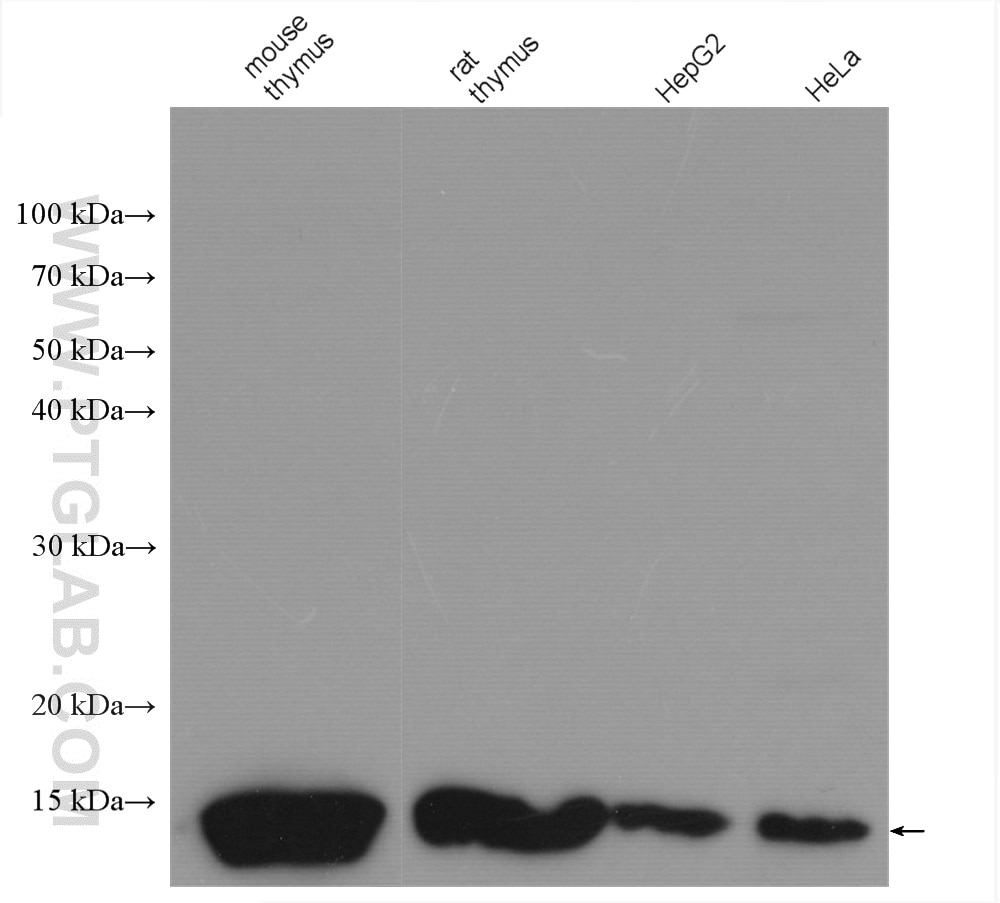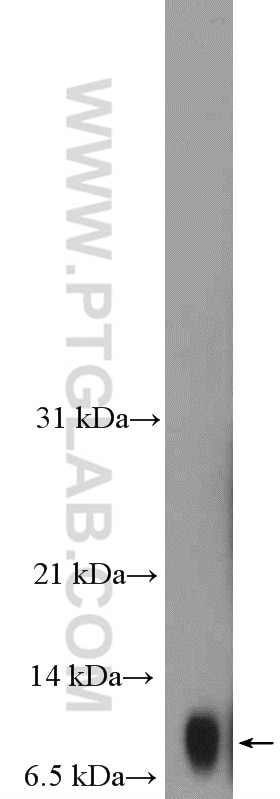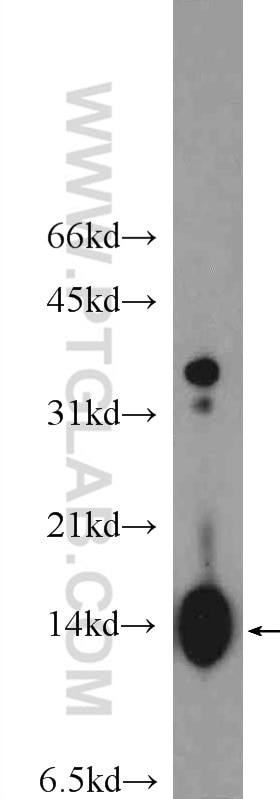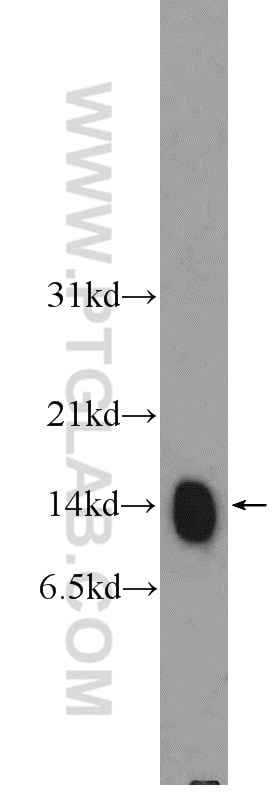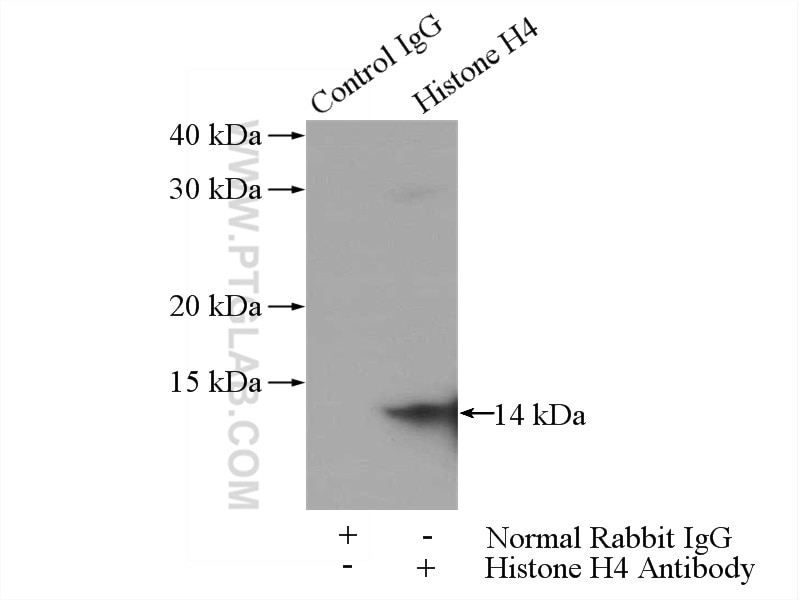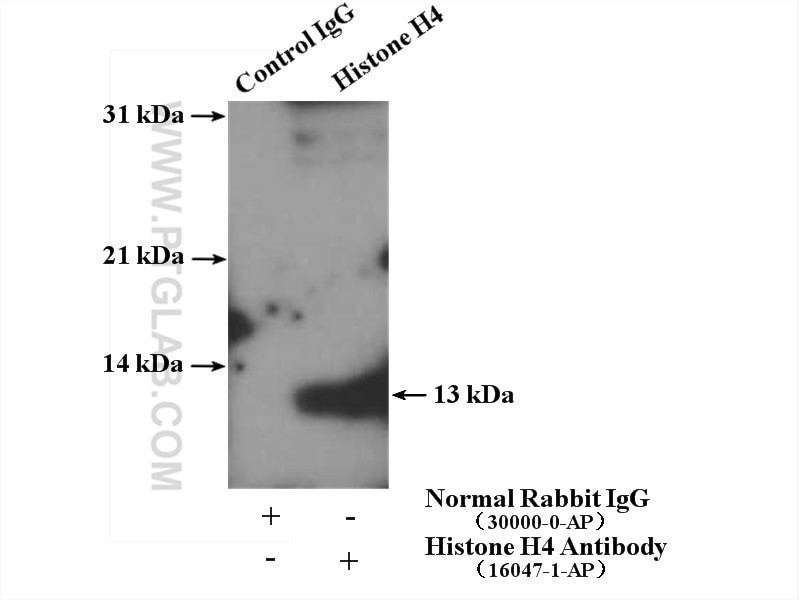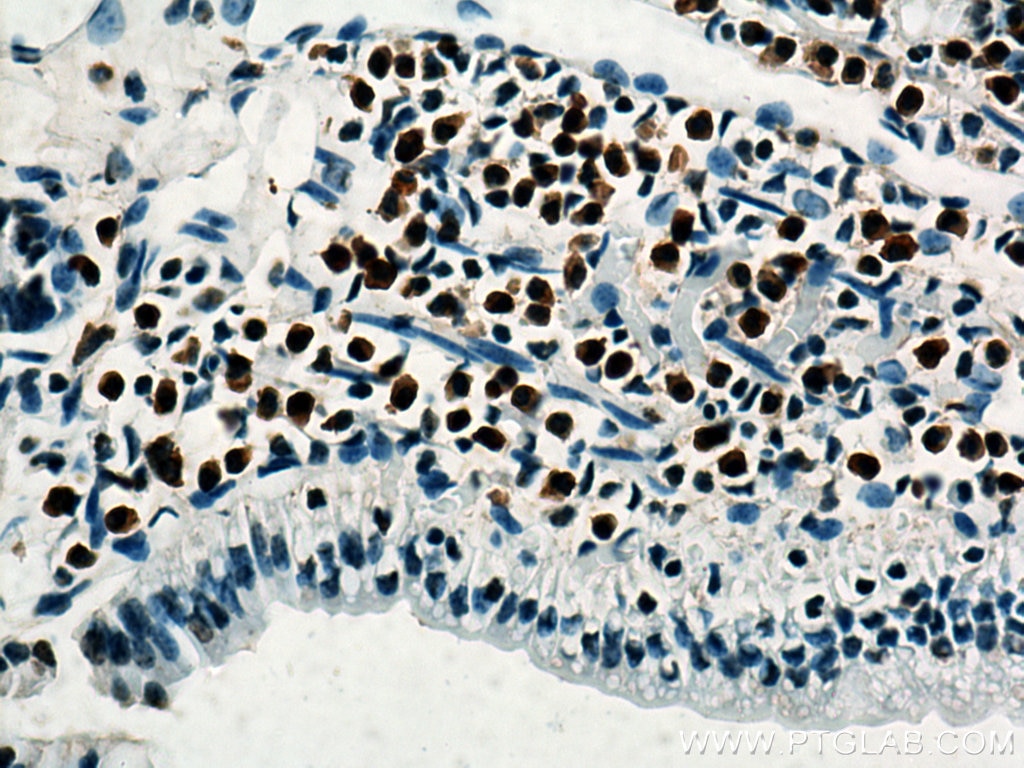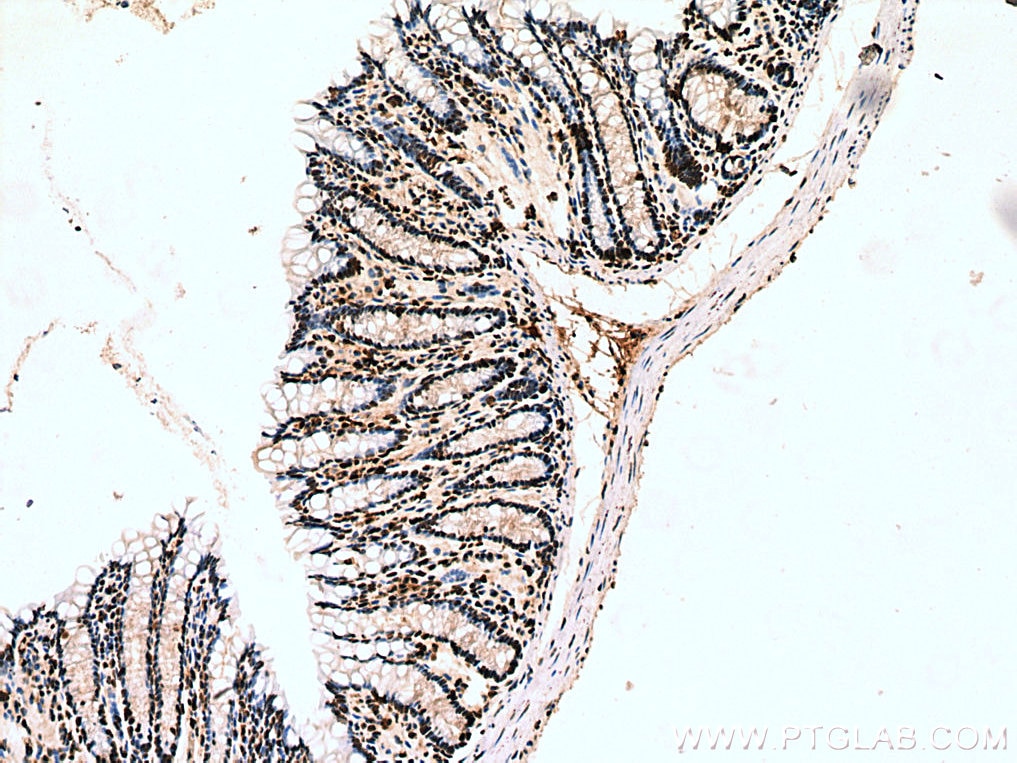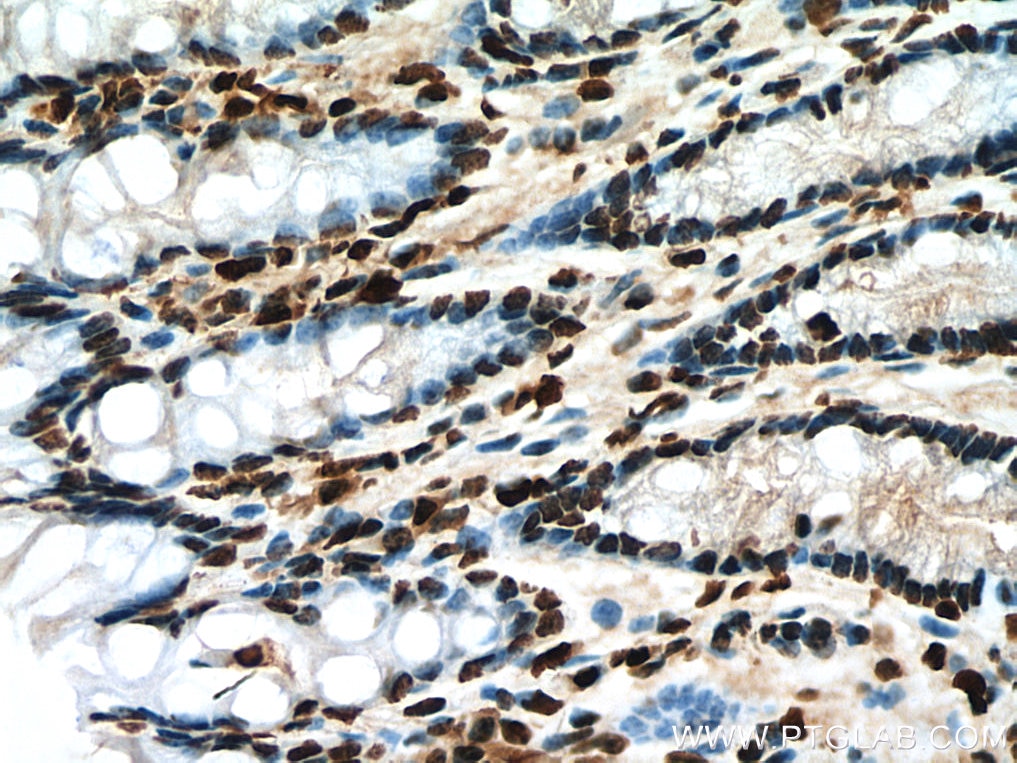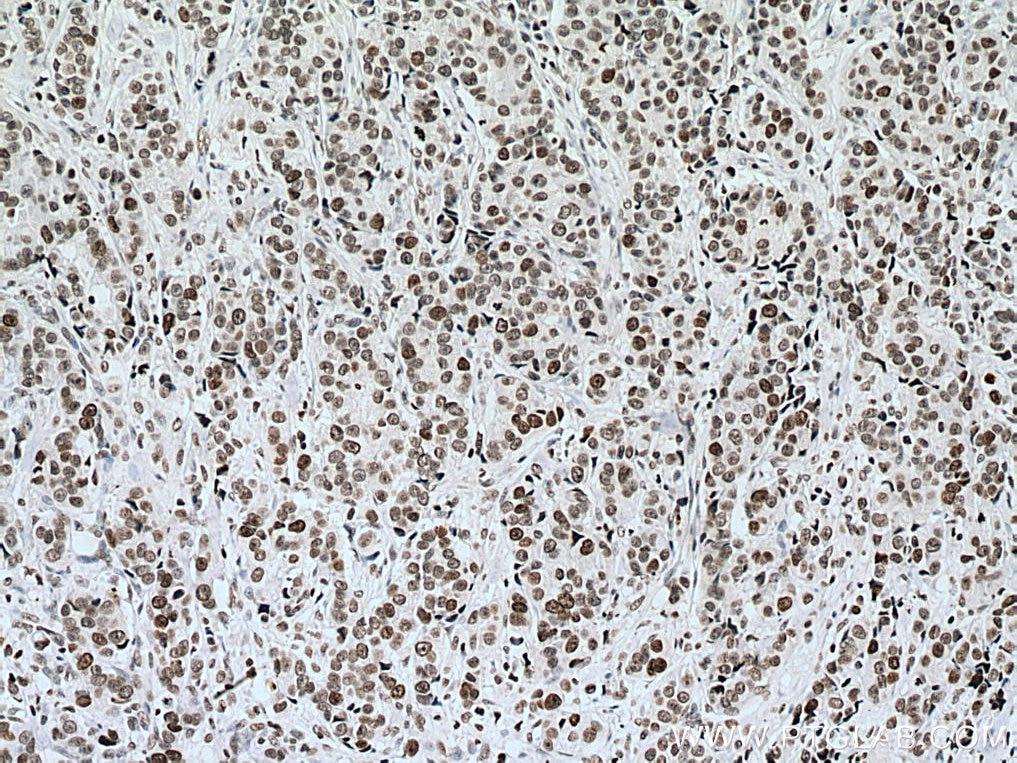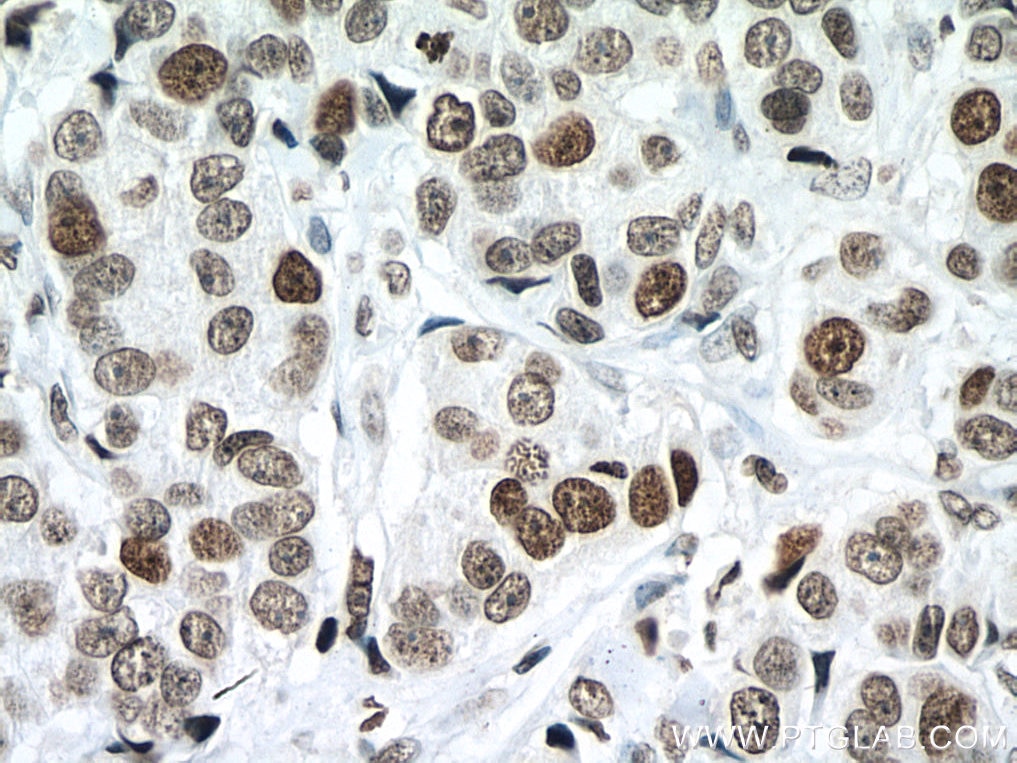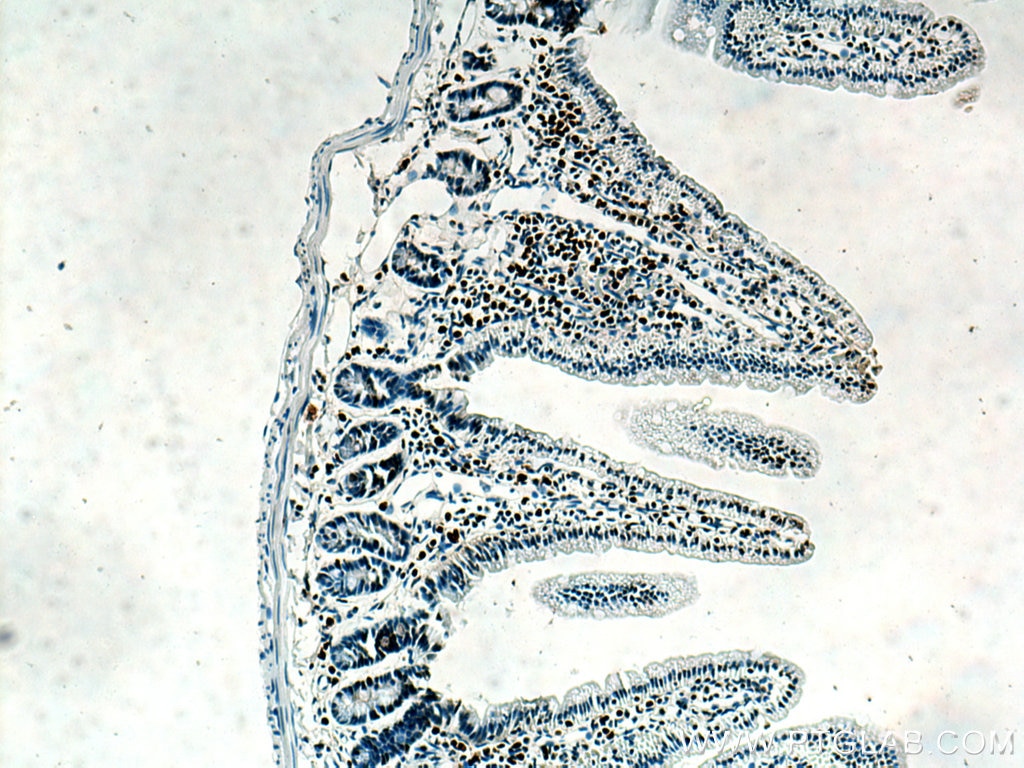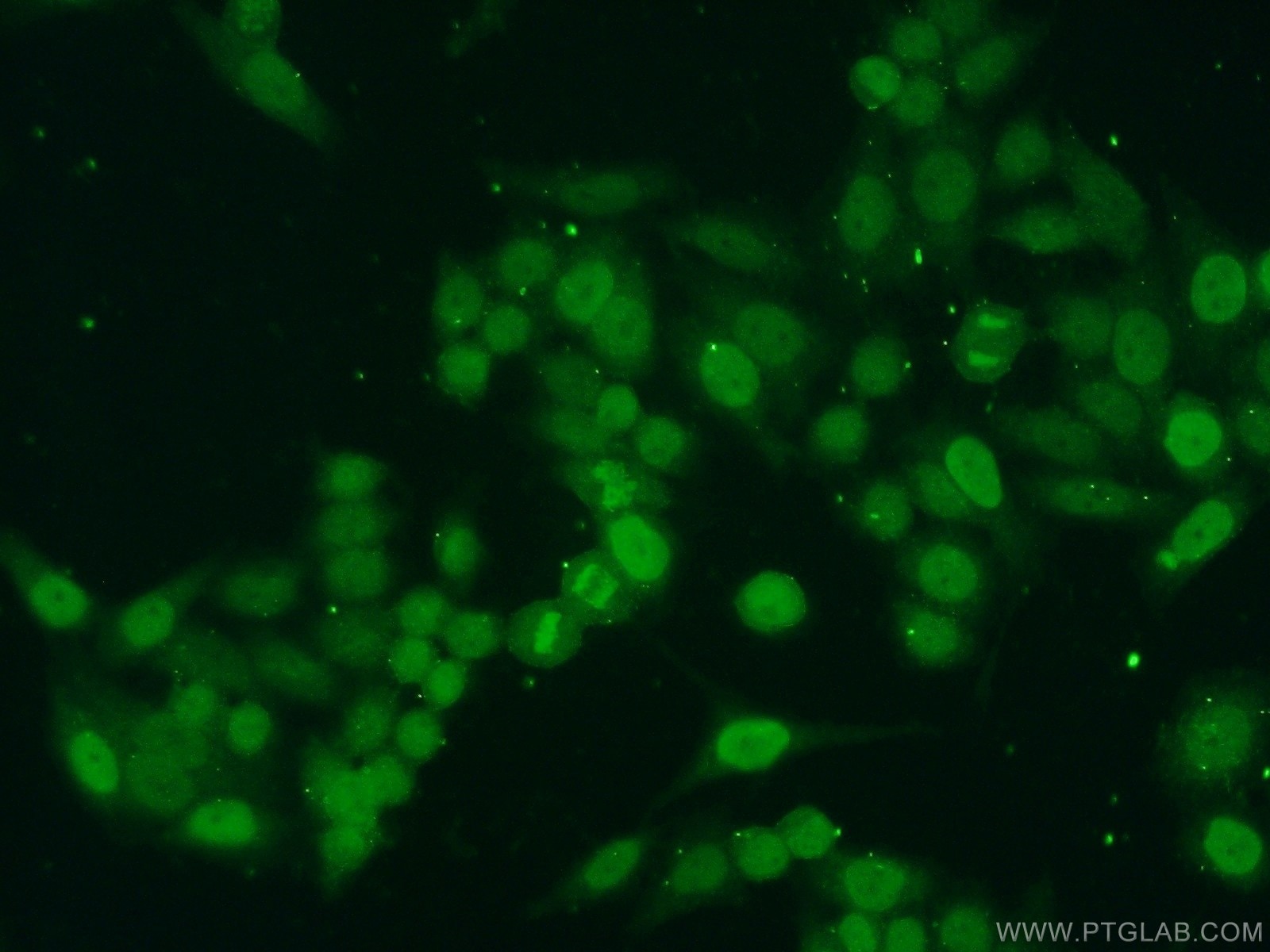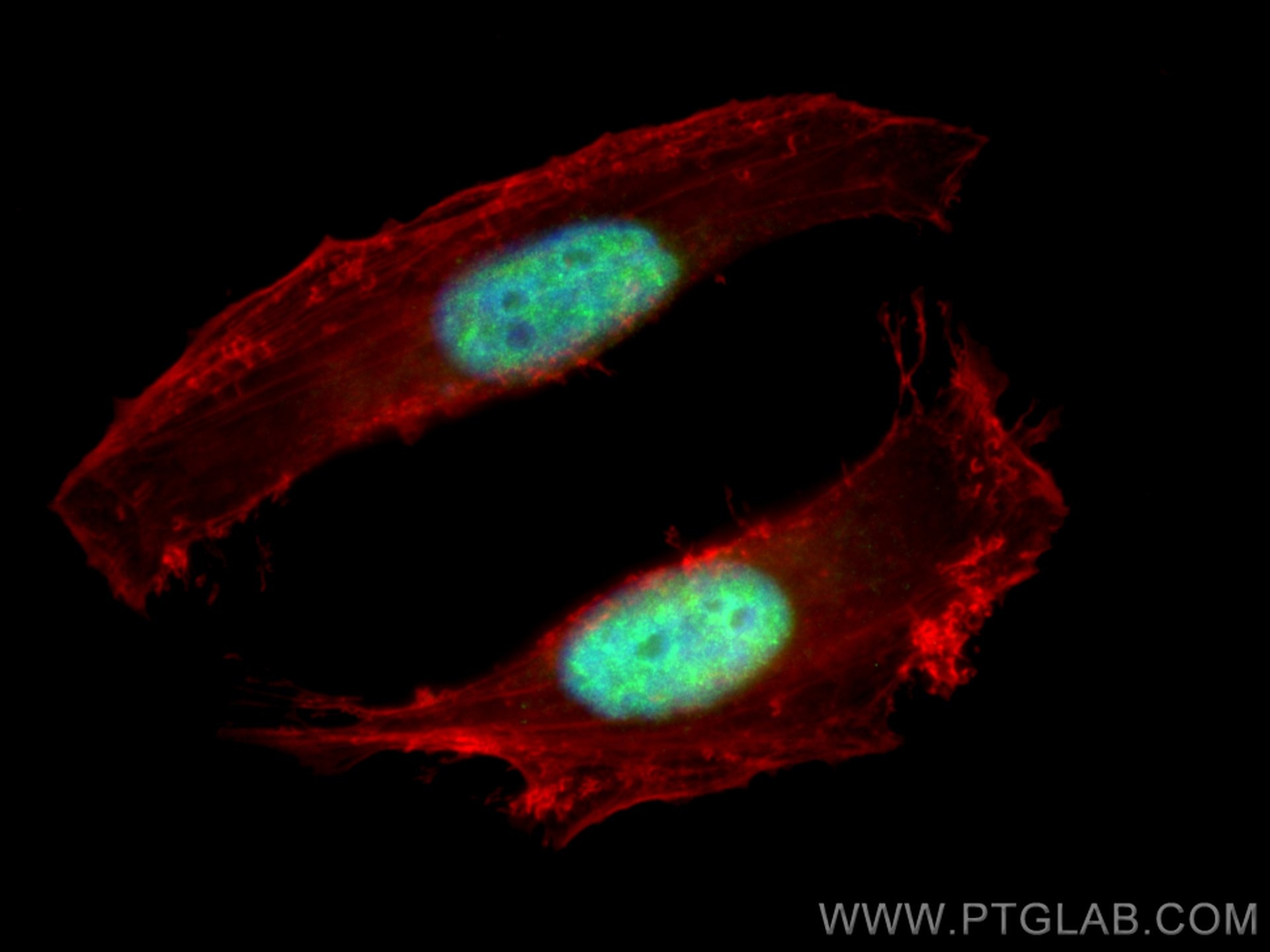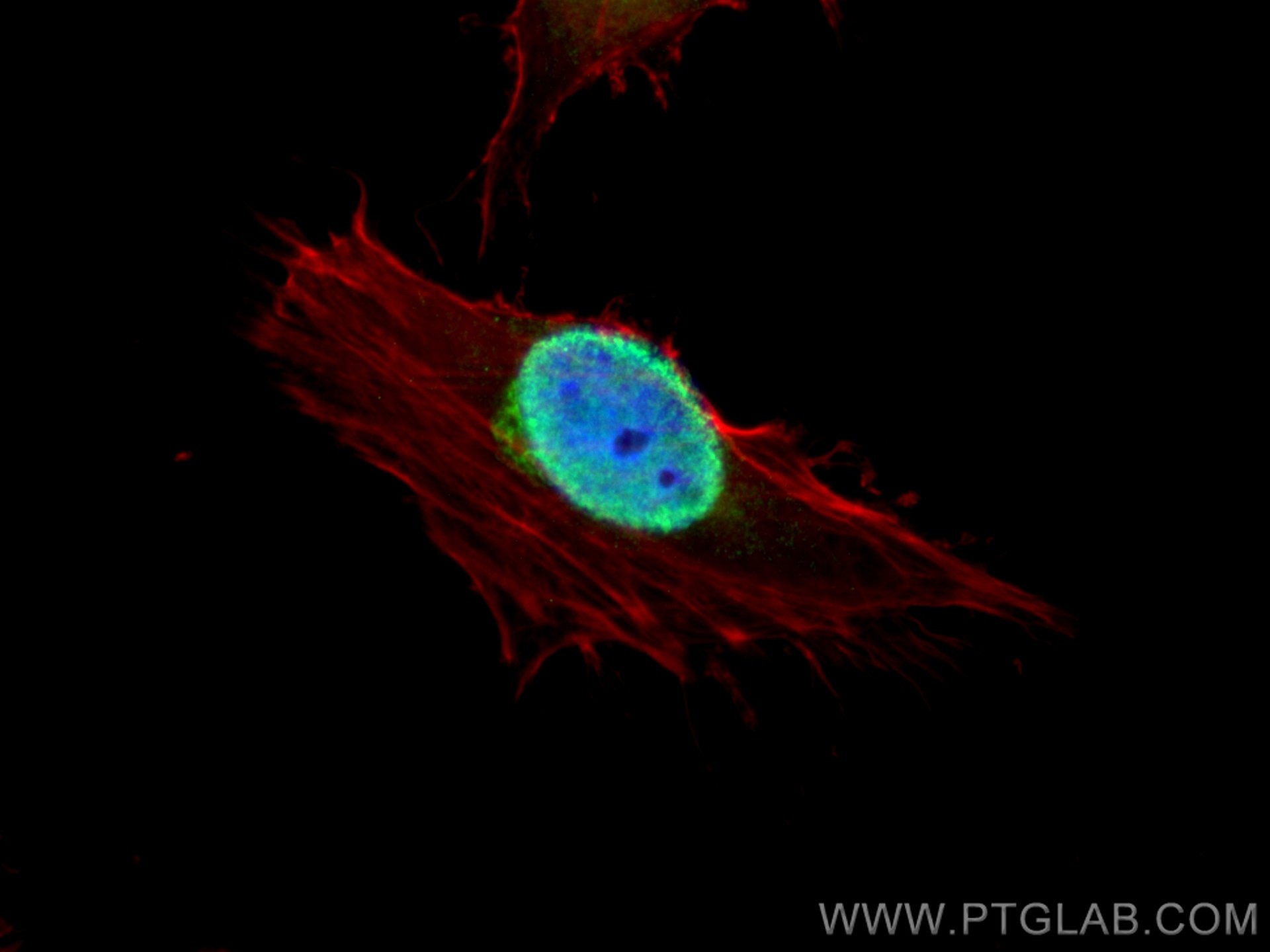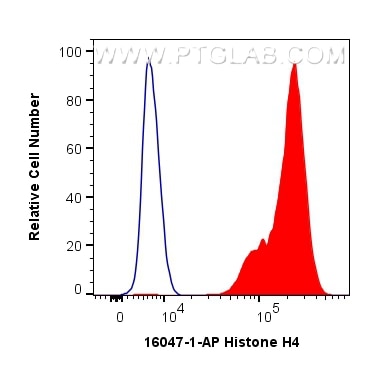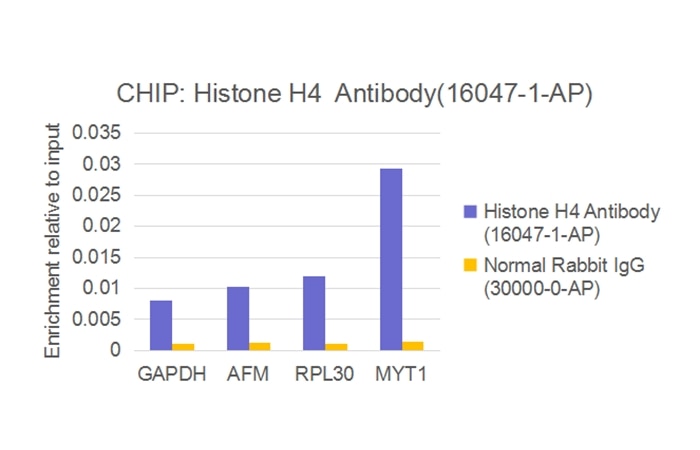- Phare
- Validé par KD/KO
Anticorps Polyclonal de lapin anti-Histone H4
Histone H4 Polyclonal Antibody for WB, IHC, IF/ICC, FC (Intra), IP, ChIP, ELISA
Hôte / Isotype
Lapin / IgG
Réactivité testée
Humain, rat, souris et plus (3)
Applications
WB, IHC, IF/ICC, FC (Intra), IP, CoIP, ChIP, RIP, ELISA
Conjugaison
Non conjugué
N° de cat : 16047-1-AP
Synonymes
Galerie de données de validation
Applications testées
| Résultats positifs en WB | cellules HeLa, cellules HEK-293, cellules HepG2, cellules HT-1080, cellules MCF-7, tissu de thymus de rat, tissu de thymus de souris, tissu rénal de souris |
| Résultats positifs en IP | cellules HeLa |
| Résultats positifs en IHC | tissu d'intestin grêle de souris, tissu de cancer du sein humain, tissu de côlon de souris il est suggéré de démasquer l'antigène avec un tampon de TE buffer pH 9.0; (*) À défaut, 'le démasquage de l'antigène peut être 'effectué avec un tampon citrate pH 6,0. |
| Résultats positifs en IF/ICC | cellules HeLa, |
| Résultats positifs en FC (Intra) | cellules HeLa, |
| Résultats positifs en ChIP | cellules HEK-293 |
Dilution recommandée
| Application | Dilution |
|---|---|
| Western Blot (WB) | WB : 1:500-1:1000 |
| Immunoprécipitation (IP) | IP : 0.5-4.0 ug for 1.0-3.0 mg of total protein lysate |
| Immunohistochimie (IHC) | IHC : 1:400-1:1600 |
| Immunofluorescence (IF)/ICC | IF/ICC : 1:200-1:800 |
| Flow Cytometry (FC) (INTRA) | FC (INTRA) : 0.40 ug per 10^6 cells in a 100 µl suspension |
| CHImmunoprécipitation (IP) | CHIP : |
| It is recommended that this reagent should be titrated in each testing system to obtain optimal results. | |
| Sample-dependent, check data in validation data gallery | |
Informations sur le produit
16047-1-AP cible Histone H4 dans les applications de WB, IHC, IF/ICC, FC (Intra), IP, CoIP, ChIP, RIP, ELISA et montre une réactivité avec des échantillons Humain, rat, souris
| Réactivité | Humain, rat, souris |
| Réactivité citée | rat, bovin, Humain, levure, porc, souris |
| Hôte / Isotype | Lapin / IgG |
| Clonalité | Polyclonal |
| Type | Anticorps |
| Immunogène | Histone H4 Protéine recombinante Ag8999 |
| Nom complet | histone cluster 1, H4e |
| Masse moléculaire calculée | 102 aa, 11 kDa |
| Poids moléculaire observé | 14 kDa, 11 kDa |
| Numéro d’acquisition GenBank | BC012587 |
| Symbole du gène | Histone H4 |
| Identification du gène (NCBI) | 8367 |
| Conjugaison | Non conjugué |
| Forme | Liquide |
| Méthode de purification | Purification par affinité contre l'antigène |
| Tampon de stockage | PBS with 0.02% sodium azide and 50% glycerol |
| Conditions de stockage | Stocker à -20°C. Stable pendant un an après l'expédition. L'aliquotage n'est pas nécessaire pour le stockage à -20oC Les 20ul contiennent 0,1% de BSA. |
Informations générales
Histone H4 is a 103 amino acid protein, which belongs to the histone H4 family. Histone H4 localizes in the nucleus and is a core component of nucleosome. Nucleosomes wrap and compact DNA into chromatin, limiting DNA accessibility to the cellular machineries which require DNA as a template. Histones thereby play a central role in transcription regulation, DNA repair, DNA replication and chromosomal stability. DNA accessibility is regulated via a complex set of post-translational modifications of histones, also called histone code, and nucleosome remodeling.
Protocole
| Product Specific Protocols | |
|---|---|
| WB protocol for Histone H4 antibody 16047-1-AP | Download protocol |
| IHC protocol for Histone H4 antibody 16047-1-AP | Download protocol |
| IF protocol for Histone H4 antibody 16047-1-AP | Download protocol |
| IP protocol for Histone H4 antibody 16047-1-AP | Download protocol |
| Standard Protocols | |
|---|---|
| Click here to view our Standard Protocols |
Publications
| Species | Application | Title |
|---|---|---|
Cell Insights into Nucleosome Organization in Mouse Embryonic Stem Cells through Chemical Mapping.
| ||
Cell Res Mutual dependency between lncRNA LETN and protein NPM1 in controlling the nucleolar structure and functions sustaining cell proliferation. | ||
Cell Res SUMO suppresses and MYC amplifies transcription globally by regulating CDK9 sumoylation. | ||
Mol Cell An oncogenic JMJD6-DGAT1 axis tunes the epigenetic regulation of lipid droplet formation in clear cell renal cell carcinoma. | ||
Nat Commun Cis- and trans-resveratrol have opposite effects on histone serine-ADP-ribosylation and tyrosine induced neurodegeneration. | ||
Autophagy The Paf1 complex transcriptionally regulates the mitochondrial-anchored protein Atg32 leading to activation of mitophagy. |
Avis
The reviews below have been submitted by verified Proteintech customers who received an incentive for providing their feedback.
FH Lucia (Verified Customer) (07-24-2025) | The antibody works well for CHIP experiments (3 ug per experiments) and acceptable for Western Blot (1:2000 dilution).
|
